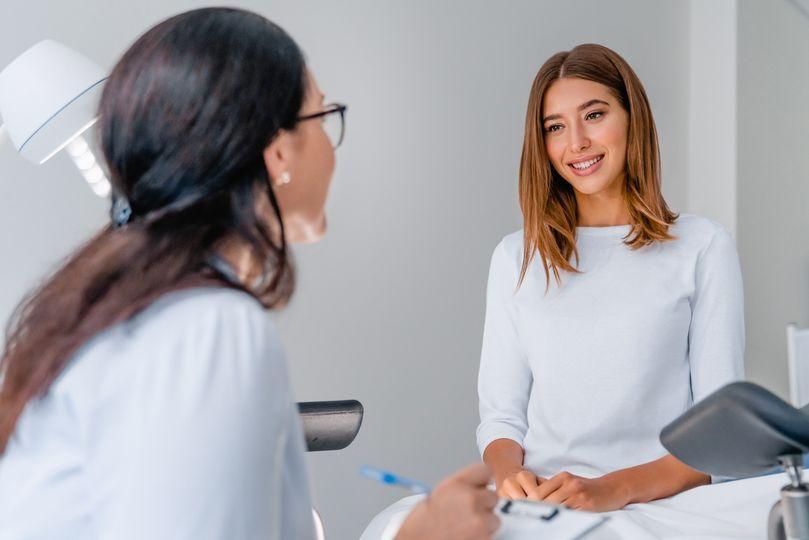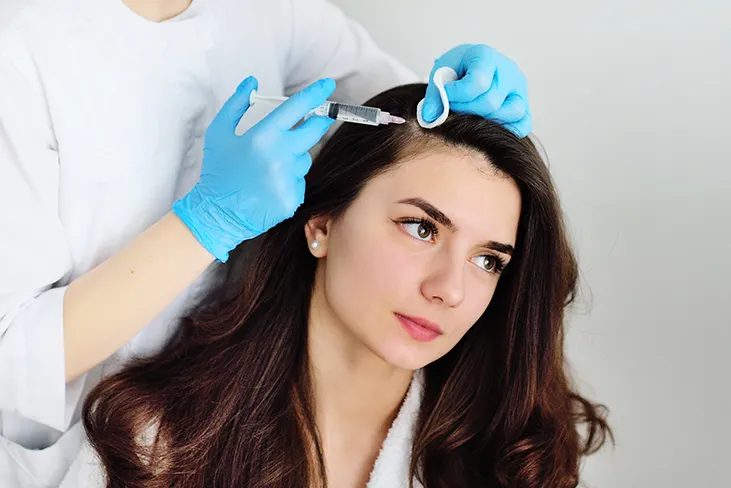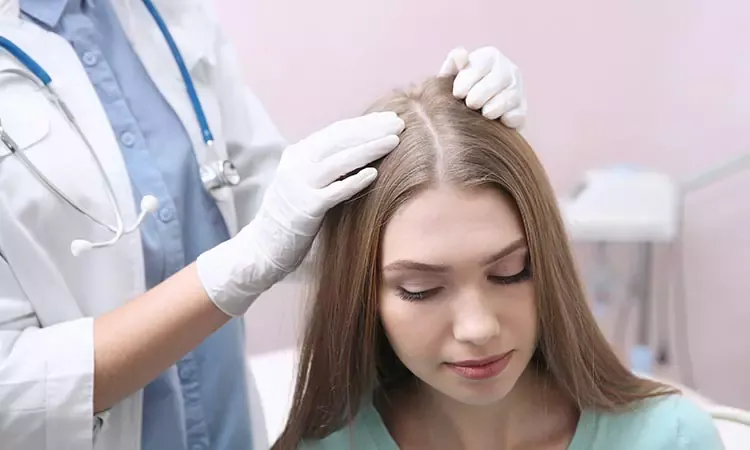It is a common fact that every woman at some point in her life suffers from hair loss, and the issue is often left unnoticed or inadequately addressed. Hair loss treatment for women should reach 50% of all women at some point in their lifetime. These impacts on women’s confidence and self-esteem are often not considered.
Hair loss is a disaster in a society where beauty is synonymous with a complete and beautiful head of hair. It impacts one’s perception of themselves and others’ perceptions of them. Stressful aspects range from perceiving oneself as less feminine to loss of identity due to hair loss.
Fortunately, there are many treatment choices for women. Examine diagnostics and both conservative and invasive management strategies.
We seek to help women lead effective hair loss treatment for women and regain their beauty and worth by raising awareness of this vital topic and offering pertinent information and support.
A dermatologist or Trichologist should be seen for significant or persistent Hair Loss in Men or women. These experts can determine the underlying reason and formulate individualized treatment regimens based on each patient’s unique requirements.
Causes of Hair Loss in Women
Let’s delve into the causes of hair loss in women (Type of Alopecia) and explore how various factors impact hair growth:
- Genetics (Androgenetic Alopecia)
Description: The most common cause of female pattern hair loss (FPHL), sometimes referred to as androgenetic alopecia, is hair thinning in women. It has an essential genetic component that is frequently inherited from family history.
Impact on Hair Growth:
- Genetic susceptibility leads to the sensitivity of hair follicles to dihydrotestosterone (DHT), a hormone derived from testosterone.
- Shorter, finer hair strands result from DHT’s shrinking of hair follicles.
- Over time, affected follicles produce thinner hair, leading to visible thinning on the scalp.
- Hormonal Changes
Description: Hormonal fluctuations play a significant role in hair health. Events like pregnancy, menopause, and thyroid imbalances can trigger hair loss.
Impact on Hair Growth:
- Elevated estrogen levels prolong the anagen (growth) phase during pregnancy, resulting in thicker hair.
- Postpartum hormonal shifts lead to telogen effluvium, causing excessive shedding.
- Menopause-related hormonal changes affect hair follicles, leading to FPHL.
- Stress
Description: Chronic stress disrupts the hair growth cycle and contributes to hair loss.
Impact on Hair Growth:
- Stress-induced hormonal imbalances (e.g., increased cortisol) affect hair follicles.
- Stress leads to telogen effluvium, which causes more hair to come out and enter the resting phase.
- Medical Conditions and Medications
Description: Certain health conditions and medications can lead to hair loss.
Impact on Hair Growth:
- Scalp infections, autoimmune disorders (e.g., alopecia areata), and skin conditions (e.g., lichen planus) affect hair follicles.
- Medications like chemotherapy compromise growing hair follicles.
- Anaemia, thyroid abnormalities, and vitamin deficiencies impact overall hair health.
- Hairstyling Practices and Chemical Treatments
Description: Aggressive hairstyling, tight hairstyles, and chemical treatments can damage hair follicles.
Impact on Hair Growth:
- Pulling hair tightly (e.g., braids, ponytails) causes traction alopecia.
- Frequent use of hot styling tools, harsh chemicals, and extensions weakens hair.
- Poor Nutrition
Description: A diet lacking essential nutrients affects hair growth.
Impact on Hair Growth:
- Inadequate protein, iron, zinc, and vitamins (especially D) Vitamin D deficiency and hair loss lead.
- Optimal nutrition supports healthy hair follicles.
Remember that addressing the underlying cause is crucial for effective hair loss management. Consultation with a dermatologist or healthcare provider can guide personalized treatment options.
Different Types of Hair Loss
- Androgenetic Alopecia: This most frequent type of hair loss in women is sometimes referred to as female pattern baldness and is characterized by thinning hair on the scalp.
- Telogen Effluvium: Temporary hair shedding caused by hormonal changes, stress, illness, or certain medications.
- Alopecia Areata is an autoimmune disease that causes sporadic hair loss on the scalp or other body areas.
- Traction Alopecia: Hair loss caused by drawing on the hair is commonly caused by tight hairstyles or hair accessories.
Diagnostic Process

Certainly! Diagnosing hair loss in women involves a comprehensive approach that considers various factors. Let’s break down the diagnostic process:
- The doctor will be concerned about your medical history, including any recent illnesses, medications, stressors, and hormonal changes (such as pregnancy or menopause).
- They will examine your scalp for signs of inflammation, infection, or other skin conditions.
- A thorough family history is crucial to identify any hereditary hair loss patterns.
Blood tests help assess underlying health conditions related to hair loss:
- Complete Blood Count (CBC): Checks for anaemia, iron deficiency, and other markers.
- Thyroid Function Tests (TFTs): Evaluate thyroid hormone levels.
- Serum Iron and Ferritin Levels: Assess iron stores.
- Hormone Levels: Measure DHEA, testosterone, and other hormones.
- A small amount of hair (about 100 strands) is gently pulled to determine if there’s excessive shedding.
- One to three hairs per pull is the usual range.
- A small slice of the scalp (about 4 mm in diameter) is taken and examined under a microscope.
- It helps identify the cause of hair loss (e.g., inflammation, scarring, or infection).
- A handheld magnification device (densitometer) checks for miniaturization of hair shafts.
- Detects early signs of hair thinning.
Two commonly used scales:
- Ludwig Scale: Assesses hair loss patterns (from no loss to severe loss).
- Savin Scale: Similar to Ludwig, it also measures overall thinning.
Remember that an effective course of treatment requires an accurate diagnosis. Consult a dermatologist to learn the cause of your hair loss and go over your options. Seek immediate assistance if your hair loss is sudden or irregular.
Non-Surgical Hair Loss Treatment for Women
Non-Surgical Treatment Options
- Topical Treatments
- Oral Medications
- Laser Therapy and Light Treatments
- Supplements and Vitamins for Hair Health
- Lifestyle Changes and Home Remedies
These non-surgical treatment options offer women various approaches to addressing hair loss, from topical solutions and oral medications to lifestyle changes and home remedies. They provide options tailored to individual needs and preferences.
Supplements like biotin, iron, and vitamin D can support hair health and complement other hair loss treatment for women. Always consult a healthcare provider before starting new supplements to ensure they are safe for you.
Surgical Hair Loss Treatment for Women

Surgical Treatment Options
- Hair Transplant Surgery
- Scalp Reduction Surgery
- Platelet-Rich Plasma (PRP) Therapy
To address hair loss treatment for women, each surgical approach has certain advantages and considerations. You may select the best technique based on your unique needs, tastes, and hair loss patterns by speaking with a licensed healthcare professional or hair restoration specialist.
For persistent or severe hair loss, seek professional advice. A dermatologist or trichologist can diagnose the cause and recommend the most effective hair loss treatment for women tailored to your needs.
Prevention and Self-Care Hair Loss Treatment for Women
The prevention of hair loss can be greatly enhanced by taking good care of your hair, adopting healthy habits, and using Hair Loss Treatment for Women. Here are a few crucial pointers:
- Avoid Tight Hairstyles
- Why?: Tight hairstyles (such as braids, ponytails, or cornrows) exert excessive tension on the hair follicles, leading to hair breakage and traction alopecia.
- Recommendations:
- Opt for looser hairstyles that distribute the tension evenly.
- Avoid pulling hair too tightly or using rubber bands that can damage strands.
- Be Gentle While Washing and Styling Hair
- Why?: Rough handling during washing and styling can weaken hair and contribute to breakage.
- Recommendations:
- Use a gentle shampoo and conditioner.
- Avoid vigorous scrubbing or rubbing the scalp.
- Pat hair dry with a soft towel instead of rubbing vigorously.
- Use wide-toothed combs or brushes with soft bristles to detangle hair.
- Limit Chemical Treatments
- Why?: Frequent use of harsh chemicals (such as relaxers, perms, or colour treatments) weakens hair and damages the cuticle.
- Recommendations:
- Minimize chemical treatments.
- If colouring hair, choose ammonia-free or gentle dyes.
- Space out treatments to allow hair to recover.
- Stress the Significance of Self-Care and Overall Well-Being
- Why?: Emotional and physical well-being directly impact hair health.
- Recommendations:
- Manage stress through relaxation techniques (meditation, yoga, deep breathing).
- Prioritize sleep and keep a healthy sleep schedule.
- Stay hydrated and eat a nutritious diet rich in vitamins, minerals, and protein.
- Regular exercise enhances blood circulation to the scalp.
- Consider scalp massages to promote relaxation and blood flow.
Remember, healthy hair starts from within. Nourish your body, be kind to your locks, and embrace self-care for luscious, resilient hair!
Proper hair hygiene is vital in hair loss treatment for women. Wash your hair regularly with a mild shampoo to keep the scalp clean and prevent buildup, but avoid overwashing to maintain natural oils.
Conclusion
Addressing hair loss in women is a multi-faceted journey that requires understanding, patience, and access to effective hair loss treatment for women options. This includes the prevalence of hair loss in women, the importance of consulting with healthcare professionals for accurate diagnosis, and the diverse treatment options available.
We have explored non-surgical approaches such as topical treatments, oral medications, laser therapy, lifestyle changes, and surgical options like hair transplant surgery and scalp reductionHair Loss Treatment for Women. We have also discussed other therapeutic approaches, such as scalp micro pigmentation, micro pigmentation, wigs, and psychological counseling, which can provide invaluable support and assistance to women navigating the emotional impact of hair loss.
You don’t have to confront hair loss on your own, even though your experience is unique. You can reclaim your confidence and take charge of your future with healthier Hair Loss Treatment for Women and fuller hair if you have the right assistance and treatment alternatives.
FAQs for Hair Loss Treatment for Women
What are the typical reasons why women have hair loss?
Hormonal changes (such as pregnancy or menopause), heredity, medical diseases (including thyroid disorders), stress, and certain drugs are some of the factors that can cause hair loss in women.
What kinds are available for hair loss treatment for women?
Women seeking hair loss treatment for women may benefit from topical therapies such as minoxidil, oral medications such as spironolactone or finasteride, laser therapy, scalp micro pigmentation, hair transplant surgery, and other options. The best course of action will depend on the cause and severity of hair loss.
Do any all-natural treatments or lifestyle modifications exist that can aid with hair loss treatment for women?
While lifestyle modifications and natural treatments may not eliminate hair loss, they can encourage healthy hair. This means minimizing stress, avoiding harsh hair treatments, giving your hair gentle care, and maintaining a healthy, vitamin- and mineral-rich diet.
How long does it take to see results from hair loss treatment in women?
The length of time it takes to see benefits from hair loss treatment in women varies based on the type of treatment chosen, the degree of hair loss, and personal circumstances. While some therapies may take longer to provide significant benefits, others may show changes within a few months.
Can hair loss be prevented?
While some forms of hair loss may not be preventable, adopting a healthy lifestyle, managing stress, avoiding harsh hair treatments, and addressing underlying medical conditions can help promote scalp health and minimize the risk of hair loss. Early intervention and treatment can also prevent further progression of hair loss.
Are hair loss treatment for women safe during pregnancy or breastfeeding?
Specific therapies for hair loss treatment for women, including taking finasteride or spironolactone orally, are not advised during pregnancy or lactation because they may pose dangers to the developing foetus or newborn. If you are pregnant or nursing, you must speak with your healthcare professional before beginning any treatment.
Can stress cause hair loss in women?
Indeed, women who experience stress may experience hair loss. Telogen effluvium, sometimes called stress-induced hair loss, is a significant stressor that throws off the regular hair development cycle and causes excessive shedding. Practising mindfulness, exercise, and relaxation techniques may reduce stress-related hair loss.

